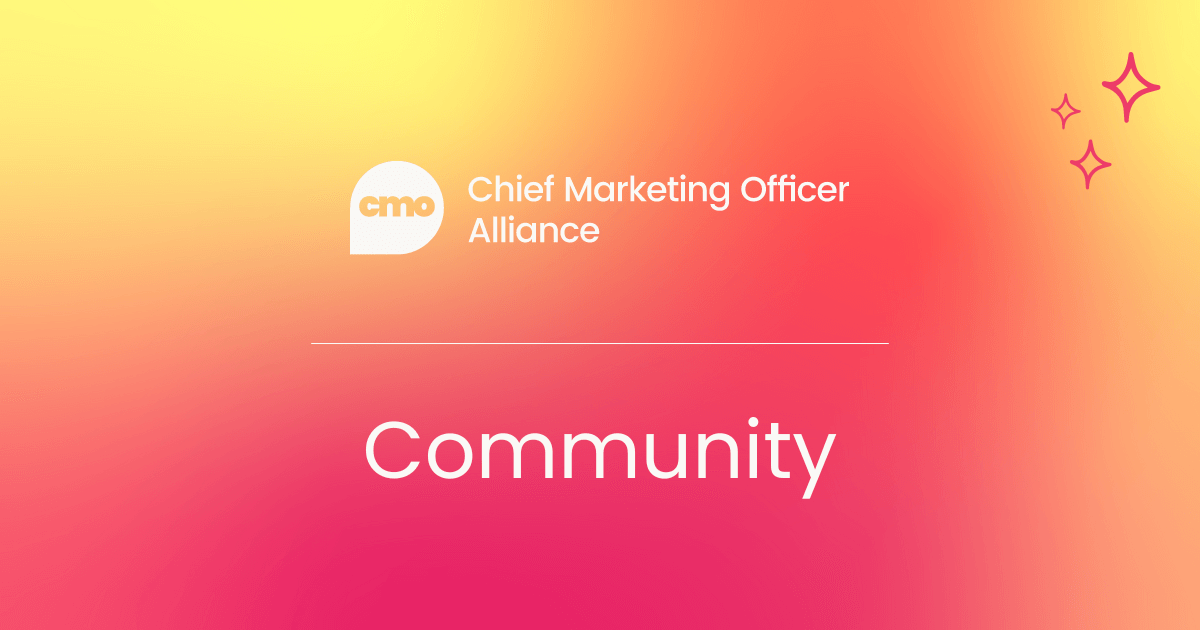Even though I came into marketing through a communications lens, I moved quickly into revenue-driven roles.
Roles that sat close to sales, where marketing wasn’t just about messaging or visibility but about performance, pipeline, and growth.
That shift shaped how I think and how I work.
So, let me share what I’ve learnt from a career in B2B tech companies, from fast-moving startups to industrial environments.
That mix, startups plus heavy industry, might sound odd, but it gave me precisely the kind of clarity I need to understand the constant through it all: a strong bias for marketing that’s accountable to the business.
ABM and demand gen aren’t opposites
There’s a lot of discussion around ABM and demand generation, and a lot of frameworks that try to separate them. But in my experience, especially in B2B, they aren’t as different as we pretend they are.
Most of us are already doing highly targeted marketing. We know exactly which accounts matter. We have the tools. We build the lists. So even when we say we’re doing demand gen, what we’re really doing is one-to-many ABM.
At HP, that’s exactly how we approach it.
One-to-many ABM is our always-on engine. It’s our growth machine, the thing that consistently feeds the funnel. And then on top of that, we run one-to-few campaigns.
More focused, more strategic, more customized depending on the segment or moment. We haven’t needed to go into full one-to-one ABM, given the nature of our business, but the pyramid is there. The structure is there. And it works.
What matters isn’t what you call it. What matters is whether it fits how your business operates and whether it helps marketing show up where it really counts.
The line between marketing and sales is blurring
One of the most important things ABM has done, intentionally or not, is force marketing and sales to work more closely.
That can feel uncomfortable at first. Marketing teams sometimes want to keep a clean boundary: “that’s sales, this is us.”
But when you start doing ABM properly, that line stops making sense. You can’t do it well if you’re not talking to sales, understanding the deal cycle, or getting visibility into what’s happening after the lead is passed over.
And that’s a good thing. Because when marketing gets closer to sales, it also gets closer to revenue. It becomes a go-to-market motion in itself. It stops being a cost center and starts being a real growth lever.
That’s where I believe marketing needs to sit, right in the center of the growth strategy, interlocked with every other team responsible for generating revenue.
Sales, channel, presales, partners, if they’re part of the motion, so are we.
Marketing doesn’t just earn its seat. It keeps it by influencing
There’s something every marketer has to learn early on.
Everyone has an opinion about what we do. Everyone’s a marketing expert. Everyone has advice and wants to weigh in.
Honestly, that’s not going to change. So the question becomes: how do we use that to our advantage?
For me, the answer is simple: influence. If marketing is going to have a seat at the table, we need to be active participants in the business. Not just defenders of our function.
We need to shape opinion, not fight it. Bring insight. Back our ideas with impact. Stay close to customers, to sales, and to strategy, because that’s how you stay relevant.
That’s how marketing becomes part of how a company grows.
Marketing’s influence on GTM
There’s no magic formula, but if you want marketing to have a real voice in go-to-market strategy, it starts with understanding the full revenue motion.
Not just pipeline numbers. Not just personas or buying journeys on a slide. I mean really understanding what has to happen for someone to become a customer. What the deal cycle looks like. Where it stalls. What actually moves someone forward.
That kind of clarity doesn’t come from a spreadsheet. It comes from being in the room.
Sit in on sales calls. Visit customers with the team. Go to the events. Ask uncomfortable questions. It’s in those unscripted moments where you start to see where marketing can truly influence, not just pipeline creation, but how deals progress and how revenue is won.
This is the kind of closeness sales has by default. But as marketers, we need it too. Because we can’t shape a journey we’ve never experienced ourselves.
Sales and marketing can’t stay in separate lanes
If you want real alignment, you can’t stop at strategy. You have to operationalize it.
One thing that’s helped my team is regular funnel calls. And not just with sales leaders, but with everyone contributing to the go-to-market motion, channel, presales, marketing ops, you name it.
We meet weekly or bi-weekly to review what’s working, where the gaps are, and how we’re tracking together. We ask the hard questions. Are we generating enough at the top? Are deals converting fast enough? Are we nurturing the right way?
We look at the funnel together because it’s the shared language. The shared accountability. Even if our roles are different, our North Star is the same: revenue.
Another piece that’s easy to overlook is sales enablement. If we want our marketing message to land, we can’t just publish content and hope it trickles through. We have to equip the field with what they need. Not just slides, but context. Training. Support.
In ABM especially, sales becomes a key marketing channel. What they say, what they show, how they follow up, it all impacts the experience.
So alignment isn’t just about leadership syncs. It’s about bringing that connection all the way down to the rep and the marketer who are out there, making things happen.
The 3Rs: A simple way to keep long-term brand in the room
Short-term pressure is real. When you’re working closely with sales, everything feels urgent. The quarter always looms. And it’s easy, too easy, to optimize only for what can be measured today.
That’s where the 3Rs come in. It’s a framework we use for every campaign:
→ Revenue (Is this driving short-term impact?)
→ Relationships (Are we building meaningful connections?)
→ Reputation (Are we reinforcing the brand we want to be known for?)
Even when we’re focused on pipeline, the other two R’s still matter. They keep us honest. They make sure we’re not just chasing numbers, but also strengthening the things that drive growth over time, trust, positioning, and relevance.
Without that balance, marketing becomes reactive. And brand-building becomes an afterthought.
AI needs a purpose to work for marketing
Like most marketers, we’ve been experimenting with AI at HP. And like most companies, we started in a pretty unstructured way, teams trying different tools, running tests, seeing what worked.
But it didn’t take long to realize that without a shared approach, you end up with disconnected efforts, duplicated work, and siloed learnings.
So now we’re focused on something more intentional.
First, we ask: what problem are we actually trying to solve? AI can do a hundred things, but that’s the trap. If you’re not clear on the use case, you’ll waste time chasing features instead of outcomes.
In our case, we’re focusing on two areas:
- Content tools. Not just generative AI, but more purpose-built platforms. One we’re piloting now helps streamline how we create customer stories and testimonials. Tools like that make a real difference in the messy, specific parts of our workflow, not just headline generation.
- ABM and demand gen tools. Here, it’s about smart targeting, lead scoring, orchestration. We’re testing what AI-enabled tools can do for segmentation, buyer intent tracking, and automation, especially in how we scale personalization without losing the human part.
This isn’t about replacing anything. It’s about working smarter. And choosing the tools that actually solve for the pain points we’ve identified, rather than just jumping on trends.
To wrap up
If I could give one piece of advice to emerging marketing leaders, it would be this: get to know your customer. Don't just stay in your cave reading market research reports. The great thing about B2B is that you have the opportunity to get close to the customer.
Go to events, tag along with a field sales rep on a customer visit, and talk directly to customers. This is the only way to truly understand what moves them and to identify genuine opportunities to influence their journey.
It's about seeing the person behind the company name and job title, and that's the most valuable insight you can bring to the table.

And some key takeaways
→ ABM and demand gen are already overlapping
Most B2B marketing today is targeted, whether we call it ABM or not. The point isn’t the label, it’s how well it fits the business and aligns with sales.
→ Get comfortable blurring the line with sales
Great marketing teams don’t stop at lead handoff. They embed. They join funnel calls. They collaborate at every stage of the journey.
→ Don’t rely on research alone. Get in the room
Customer insight lives in conversations, not just reports. To influence the journey, you have to witness it firsthand.
→ Use frameworks like the 3Rs to stay balanced
Revenue is key, but so are relationships and reputation. The best strategies honor all three.
→ AI should solve problems, not create noise
Choose tools that address actual pain points, and make sure they’re used across teams, not just in silos.
→ Field alignment is where strategy becomes reality
The real test of alignment isn’t what leaders agree on. It’s what gets said in front of the customer.
→ Influence starts with showing up
Your seat at the GTM table isn’t guaranteed. You earn it by being present, asking better questions, and helping the business grow.
Thanks for reading. If any of this resonates, take it as your nudge to get a little closer to the people your marketing is meant for.
Connect with top CMOs worldwide in a private, relaxed space to share insights, seek advice, and stay updated on the latest in marketing leadership.
From career tips to growth strategies, join a vibrant community built for learning, networking, and celebrating marketing successes.







.png)









 Follow us on LinkedIn
Follow us on LinkedIn






